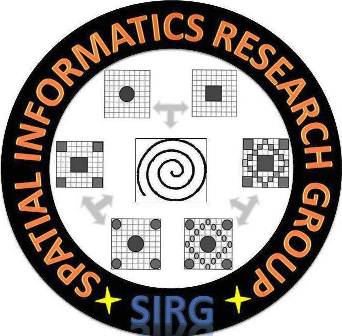

| ABOUT SIRG |
| PRIMARY FOCUS |
| SIRG SCOPE |
| SIRG OBJECTIVES |
| SIRG TEAM |
| COLLABORATORS |
| CONTACT US |
| SIRG Primary Focus |
Availability of spatial data—for natural, anthropogenic, and socio-economic studies — from a wide range of sources—with numerous spatial (from atomic to cosmological scales) and temporal resolutions—and a variety of formats, opens new horizons to the spatial information science community. For example, urban areas, that the previous satellites used to resolve rather poorly, have become richer from year to year in significant details in shapes and contours. And clearly, such new complexity leads to new problems. In relation to spatial information, schematically there are four aspects, which are also four challenges that spatial information scientists face. They have to retrieve this information, which supposes to segment the space in homogenous zones according to some criteria. This often implies filtering steps. They must analyse the selected regions, i.e. associate with them certain numbers and numerical functions, such as size distributions. They have to apply the above geometrical descriptors in some specific context, such as “what is the best place to locate a hospital, or to trace a road?”. And, sometimes, they have to conceive random or deterministic models for synthesizing the results of the analysis phase, in order to make forecasts. Indeed, Image Processing, as well as GISci, has considerably evolved in the last two decades, and some difficult segmentations require up-to-date versions of wavelets or watersheds, for instance. The studies in this group aim to borrow methodologies from various sources (e.g. wavelets, random sets, geostatistics, Radon transformation, fractal geometry, mathematical morphology, rough set theory, and fuzzy geometry). Among the methods, mathematical morphology (Matheron 1975, Serra 1982) deserves a special mention because it stems from set-descriptors, which have been extended to functions and partitions. As a matter of fact, many algebraic operations on maps (Tomlin 1983) involved in GISci-related analyses can be performed via mathematical morphology (e.g. Pullar 2001, Stell 2007). In addition to these, other issues that will be addressed are the development of theoretical methods and algorithms for basic problems of pattern recognition and image processing such as consistent set estimation from a point pattern, genetic algorithm based dot pattern analysis, convex hull detection of a digital binary object, and advancement of fuzzy clustering methods.
|
